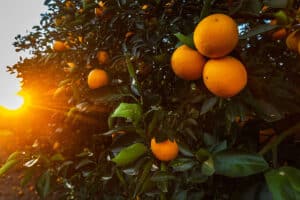You’ve no doubt heard, at some point in your life, that each of us tends to be either “right-brained” or “left-brained”. If you’ve never been exposed to the difference between the two, consider these main trait differences:
Left-brainers tend to be more detail specific, logical, and linear in their thinking process. For example, when you show them a picture of a brick wall – they tend to count the bricks. Show them a photo of a daisy, and they’re likely to count the petals & stamens, etc.
Right-brainers see the big picture, and they are more intuitive and emotional. Show a the brick wall and they see a major barrier. Show the daisy, and they exclaim “Oh, what beautiful colors!”
Investors in the stock market also make left and right-brain investment decisions. Lefties may analyze charts, historical prices, S&P scores, Morningstar reports, and more – until 2AM – looking for the next perfect stock buy.
The right-brainers may simply watch the morning news, look at a chart or two, and simply “intuit” which stock to buy – intuition being their guidance tool.
I recently had a call from a very intelligent man in a nearby county – well-educated and very fact oriented. He asked pointed questions – followed by an email with his “baker’s dozen” investment questions.
Upon reading his 13 questions, I discovered that hidden within them, were another 48 questions. They sounded like this: “What percentage of the land is wooded? Of the part that is wooded, break down the percentage and species of each tree type. What is the diameter of each tree at chest height in inches? What is the value of each species of tree in today’s timber market?” Get the picture?
His own agent later explained that he had shown his buyer over 50 properties, but was never able to make a decision. According to the agent, as long as you kept answering his questions, he would keep asking more. That is known as “the paralysis of analysis”.
Now – try a right-brainer’s simple 3-part solution:
1. Price vs. Value – Deciding What Price to Pay
Learning the price is easy – ask the seller or his agent. Determining the value takes more time. You’ll need to know:
The Asking Price
The price asked on similar properties in the same area offering similar features and benefits. Since all land parcels are different, determine a price per acre average for those similar parcels.
List to Sell Percentage
Of those sold in the past 24 months, what was the final sale price compared to the original asking price? What was the list vs. sale percentage? How long did they take to sell? For example, a $600,000 property that sold for $450,000 sold at 75% of the listed price. Assume that after analyzing 6-7 properties, on average they sold for 83% of listed price. Your object is to buy at a price that would bring you a healthy profit if you re-sell at the discounted 83% of current asking prices. So, let’s say your objective is to buy at 63% of asking price. That’s just 20% below current selling prices. So… you find a 40-acre parcel priced at $301,204. You know that your objective is to re-sell it at 83% of that or $250,000. You would make an offer of $189,758 (63% of asking price).
In summary – did you make a 20% profit? NO! You made a 31.7% profit if you sold at $250,000. Here’s the math: Sale price – $250,000 – divided by purchase price – $189,758 equals 1.317. You receive your original investment of $189,758 PLUS the profit of $60,242 – 31.7% profit.
2. Demand – What Buyers are Seeking
You are making a 5-year investment purchase and realize prices are at their lowest right now. Within 5 years, prices should rise to a more appreciated level.
Now, look into the future and determine what features/amenities buyers will be seeking in a land purchase. Here in the mountains, we know that Florida land buyers put long-range views at the top of their demand chart. We also know that North Carolina land buyers come mostly from the larger cities and demand water– a spring-fed stream or creek.
We’ve also noticed, in the news, an up-surge of families describing themselves as “Preppers” – folks planning to survive the failure of our country’s financial system. They’re putting up large quantities of food, and plan to live off the land, using solar, hydro, and wind for energy, etc.
At the top of “Preppers” lists is water, tillable ground for gardening and fruit trees, wildlife (game) for hunting, and valleys surrounded by high ridges for defense.
When considering demand in 5 years, will the buyers be Floridians buying the highest properties for their high elevation views (bitter wind, cold & snow), or will they be people within the state, moving out of large cities for their family’s well-being and defense?
The lesson here? Purchase property at the best price to value, that offers the most valued features and amenities to buyers in the future.
3. Value Added Considerations
The third consideration should be “What can be done with the property – as purchased – that will cause demand for it to rise over 5 years.
A good example is the first 114 acres I purchased here in the mountains. The property was a 3rd generation family farm – first granted to the owner’s grandfather in the 1860’s by the state of North Carolina in need of major TLC.
The property lay at the end of a state-maintained road with a strong mountain stream down the middle, fed by 11 different springs originating on the property. Two major floods in the 1900’s, and thousands of other floods over the earth’s history, left rich soil in the center of the property – a level meadow area of about 20-30 acres. The balance of the property is a horseshoe shaped high ridge that protects the property on three sides from winter’s cold and wind – and unwanted intruders.
The level area was grown up in blackberry bushes. You couldn’t walk a foot without tearing your shirt or scratching your face and hands. Today, that flat area is an open grassy meadow – the result of twice annual mowing.
The only way in or out of the valley is through a narrow opening at the end of the state road. Old logging trails have been improved giving access to the property on ATV’s and locating game. The land is home to 8 bears and 16 eight-point bucks, plus wild turkey, coyote, bobcat, rabbits, squirrels, and other critters.
Overall, the improvements and value I’ve added, have greatly improved the property’s appeal to future potential buyers.
To enjoy a nice profit on your next land investment (and sleep more soundly at night) simplify your decision-making. Buy property with 1) the features and amenities that will be attractive in 5 years, 2) at the right price, and 3) improve it.
This content may not be used or reproduced in any manner whatsoever, in part or in whole, without written permission of LANDTHINK. Use of this content without permission is a violation of federal copyright law. The articles, posts, comments, opinions and information provided by LANDTHINK are for informational and research purposes only and DOES NOT substitute or coincide with the advice of an attorney, accountant, real estate broker or any other licensed real estate professional. LANDTHINK strongly advises visitors and readers to seek their own professional guidance and advice related to buying, investing in or selling real estate.










Add Comment